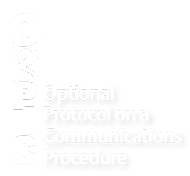RATIFICATION STATUS
The entry into force of the Third Optional Protocol on a Communications Procedure (OPIC) in 2014 was groundbreaking as it allowed children to lodge complaints with the UN about violations of their rights, if violations cannot be addressed effectively at national level. However, to advance access to justice for children, it is important to increase States’ ratification of the OPIC and to work for its effective implementation at the national level.
According to the United Nations Treaty Collection (UNTC), in 2024, ten years since the entry into force of the Optional Protocol, 52 States have ratified the OPIC, 15 have signed but not yet ratified it, and 131 have taken no action.
Did you know?
The last country to have acceded the OPIC was Estonia on March 27, 2025. According to article 19.2 of the OPIC, the Protocol will enter into force for the Republic of Estonia on June 27, 2025.
Only Signatory (16)
State Party (53)
No Action (128)
Note: certain countries are too small in size to be observed on the above map. For a full list click here.
OPIC Ratification Trends
- Regional Breakdown of States' Parties
- States Parties to Optional Protocols versus UNCRC
- Number of States' Ratifications per Year

An additional world region, North America, is not displayed (no State has yet ratified).
196 States have ratified the Convention on the Rights of the Child (UNCRC). The large majority (+80%) of States parties are currently from the regions of Europe & Central Asia and Latin American & the Caribbean. Actually, more than half (57%) of OPIC States parties are from the region of Europe & Central Asia. What accounts for the low ratification rates in other parts of the world?
Hover on chart to reveal totals in chart.
196 States have ratified the Convention on the Rights of the Child (UNCRC). Only 25% of the States that have ratified the Convention on the Rights of the Child have ratified the OPIC. In comparison, more than 80% of the States having ratified the Optional Protocol to the Convention on the involvement of children in armed conflict (OPAC), and 90% of the States parties to the Optional Protocol to the Convention on the sale of children, child prostitution and child pornography (OPSC) have ratified the Convention on the Rights of the Child.
Why is the OPIC less ratified than the first two Optional protocols to the Convention on the Rights of the Child? Is it simply a question of time bearing in mind that the first two Optional Protocols were adopted almost 20 years ago? How many years will it take for at least 76% of States parties to the Convention on the Rights of the Child to have ratified the OPIC?
Hover on chart to reveal totals in chart.
The annual average of countries ratifying the instrument is 4, with 2015 and 2017 being the years where most States (8) have ratified the instrument so far.
Bearing in mind that 145 States parties to the Convention on the Rights of the Child have yet to ratify the OPIC, if the annual average is maintained it will take almost 30 years for all 196 States to be parties to the OPIC.
How can a State ratify the OPIC?
The OPIC has been adopted by the United Nations General Assembly and opened for signature and ratification by any State, which has ratified or acceded to the Convention on the Rights of the Child (UNCRC), the Optional Protocol to the UNCRC on the involvement of Children in Armed Conflict (OPAC) or the Optional Protocol to the UNCRC on the sale on the sale of children, child prostitution and child pornography (OPSC).
What does ratification of the OPIC mean?
In order to become a party to OPIC, States must demonstrate, through a concrete act, their willingness to be legally bound by the provisions of the OPIC. This willingness can be expressed in two different ways:
- By signing and ratifying the OPIC
- By acceding to the OPIC
Both procedures have the same legal effect, and can be carried out at any time at the United Nations headquarters in New York, USA.
Note: The process of treaty ratification or accession is determined by national law in each country, generally in the national Constitution. Often, the government can decide to sign a treaty without further consultation, while ratification or accession generally needs to be approved by the national Parliament.
Signing and ratifying the OPIC
When a State signs the OPIC, it signals its intention to become a party in the future. The State agrees that it will not do anything inconsistent with the object and purpose of OPIC. However, at this stage, the State is not yet legally bound by it and individuals under its jurisdiction cannot yet submit communications or information on grave or systematic child rights violations to the Committee on the Rights of the Child.
After signing the OPIC, a State should proceed to ratification of the instrument, thus becoming a State party that is legally bound to implement its provisions.
! Note: a State can sign and ratify the OPIC at the same time.
Acceding to the OPIC
Which State representatives can sign, ratify or accede to the OPIC?
Other representatives, such as the Ambassador of the State’s mission before the UN in New York, can sign, ratify or accede if they are in possession of the appropriate full powers emanating from one of the above-mentioned authorities.
OPIC becomes applicable for a State that has ratified the instrument, 3 months after its ratification.
Article 19.2 of the OPIC.
For more information, please refer to: When can the OPIC be used?
UN Treaty Week
Each year, the United Nations organises a Treaty Event to encourage States to ratify international treaties in the context of the General Assembly. Heads of State or Government or Foreign Ministers or other duly authorised state representatives have made use of this unique opportunity to express support for the multilateral treaty framework and the rule of law.

